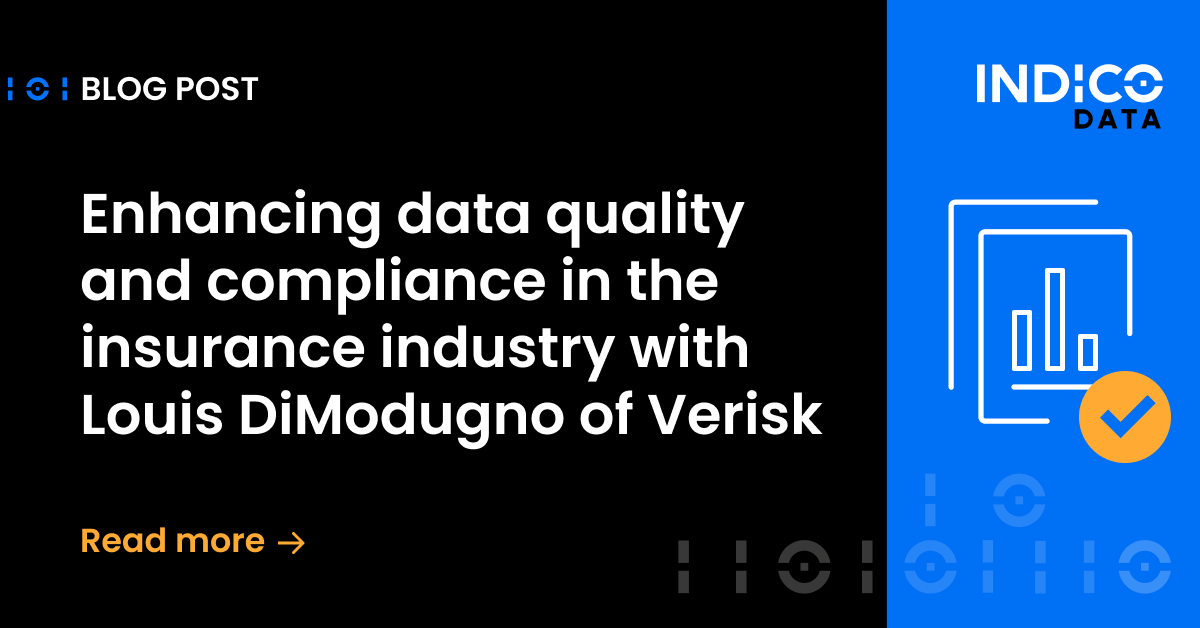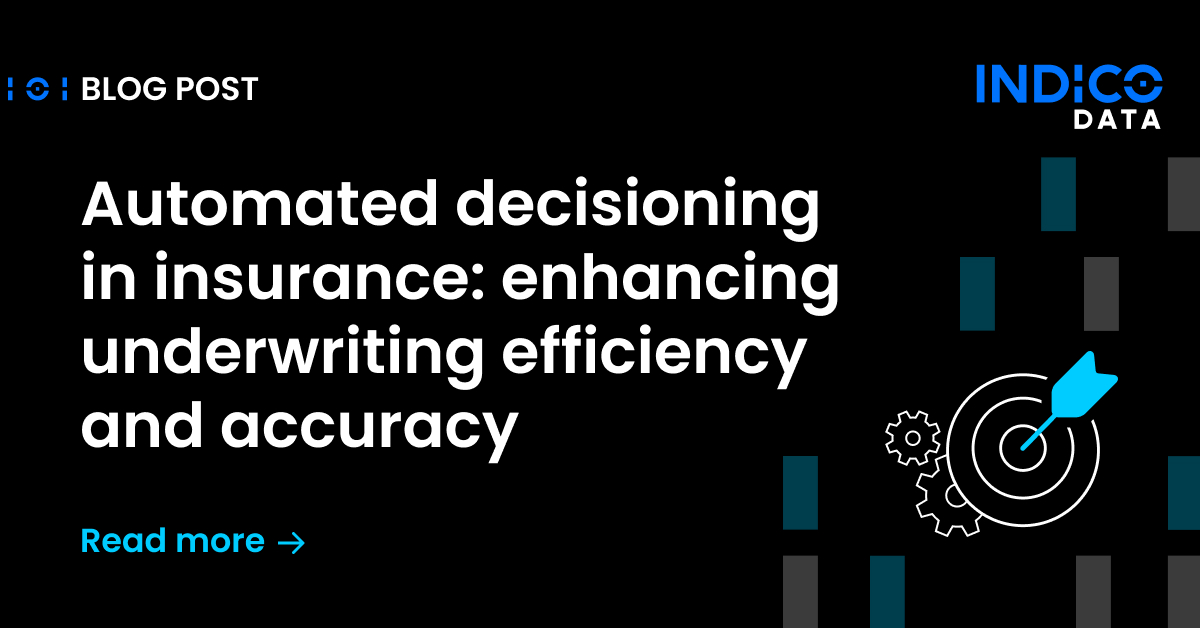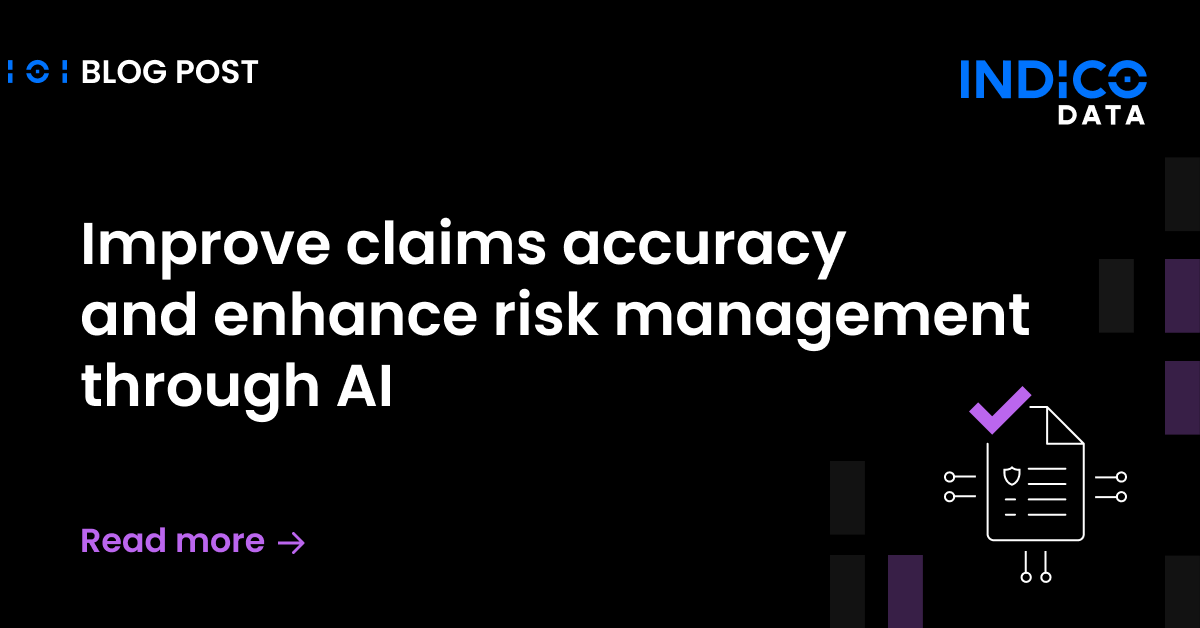Insurance company IT execs charged with finding solutions to help automate insurance processes likely don’t think much about venture capital firms like mine. But a recent discussion prompted me to consider how our approaches have a lot in common: we both search for viable technologies to address known pain points.
This thought occurred to me during a discussion with Brandi Corbello, SVP of Global Delivery for Indico Data, who was a guest on a recent episode of Unstructured Unlocked, the podcast I co-host with Chris Wells, Indico’s VP of Research and Development. Our talk also delved into how insurance companies measure success with automation projects, including the metrics they should be considering, and why accuracy isn’t necessarily a great measuring stick.
Listen to the full podcast here: Unstructured Unlocked episode 20 with Brandi Corbello
Align automation to strategic objectives
Corbello was once on the customer side of the tech equation, as the VP of Transformation for the real estate giant Cushman & Wakefield. Now she’s on the front lines delivering automation solutions to B2B customers, namely the Indico intelligent intake platform that helps insurance companies (among others) automate processes around underwriting submissions, claims, and policy servicing.
When Wells asked her about the automation customer journey, she said it starts with sourcing the right tools. “Putting my former customer hat on, it’s really important to understand first what problem we are solving and does that align to the strategic objectives of our organization?” she said.
That is not at all unlike the approach my firm, Sandbox Industries, takes when deciding which companies to invest in.
We need to believe the tech firms we invest in can help clients address the strategic objectives Corbello talked about and are successful in delivering what they promise. After all, we’ll only be successful if the companies we invest in are.
It’s also important that customers are able to not only implement the technology, but continually expand its use across the organization, or “land and expand,” as Corbello put it. “It’s not just about acquiring the customer, it’s also ensuring that customer continues to be happy and is sticky with you,” she said.
Related content: How insurers can get over the legacy hurdle and adopt automation technology
Measuring success
Being happy equates to being successful with a given technology, so we asked what metrics insurance companies use to measure success.
She hears consistently about gross premiums written and loss ratios, but really the issue comes down to increasing operational efficiency to drive scale, she said. Underwriting is a particular pain point.
“[Insurance companies] can’t even get to every submission that’s hitting their inbox, to clear it or know if they should quote or not quote it,” Corbello said. The goal is to use technology to at least take a look at each submission and then decide which ones to write.
“That means you could clear more business, you could quote more business, you could find more business,” she said. “Your gross written premiums go up and your loss ratios should go down because you have your preparers turning into reviewers, to ensure you’re writing the right risk.”
In order to measure whether you’re getting the improvements you want or expect, you need to decide what you’re going to measure and how to measure it. Think beyond revenue or total cost dollars and consider scale and process velocity, which can lead to higher margins.
Then establish a baseline of your current performance according to those metrics, and do it before implementing any technology – or even any related organizational changes. After you implement, you can determine whether you saw the change you expected. Even if not, you may find you did make significant gains, enough to establish a healthy business case going forward.
Another tip from Corbello: when conducting an automation technology pilot, establish a bare minimum number that you’ll be comfortable with. If you’re automating an underwriting broker submission use case, how many fields do you need to capture to clear a submission, so you’re ready to quote it? She says 20 to 30 fields is typical. Once you’re in production with that, perhaps capturing another 50 to 70 fields will enable you to automate the actual quoting process.
Related content: 5 ways artificial intelligence helps automate insurance claims processing
Don’t fall into the automation accuracy trap
One metric that is tricky to employ when measuring effectiveness of an automation solution is accuracy.
This is a topic we’ve covered before on the podcast, notably in the discussion Wells had with Art Borden, an insurance technology expert who has worked at CNA and Zurich Insurance. But Corbello had an interesting take on the topic.
When it comes to assessing accuracy, “we are harder on AI technologies than we are on people,” she said. In her Cushman days, it was a topic that came up with auditors when they looked at the machine learning (ML) solutions she was employing. They asked how she knew the ML solution could really read.
“My question back was, ‘Well how do you know people can read? Do you do a literacy test every year to make sure that they have adequate reading levels?’” she said. No, of course companies don’t do that. But they also don’t typically measure how accurate those same employees are at pulling data from documents, yet have no problem expecting automated solutions to be near perfect.
The point is intelligent automation doesn’t have to be perfect to give you a significant improvement over the status quo. But you’ll only know how much you’re improving if you measure the status quo, which gets back to baselining.
Find the full transcript here.
This was just a taste of the discussion we had with Corbello. Check out the whole conversation (Episode 20) on YouTube or on your favorite podcast platform, including:



